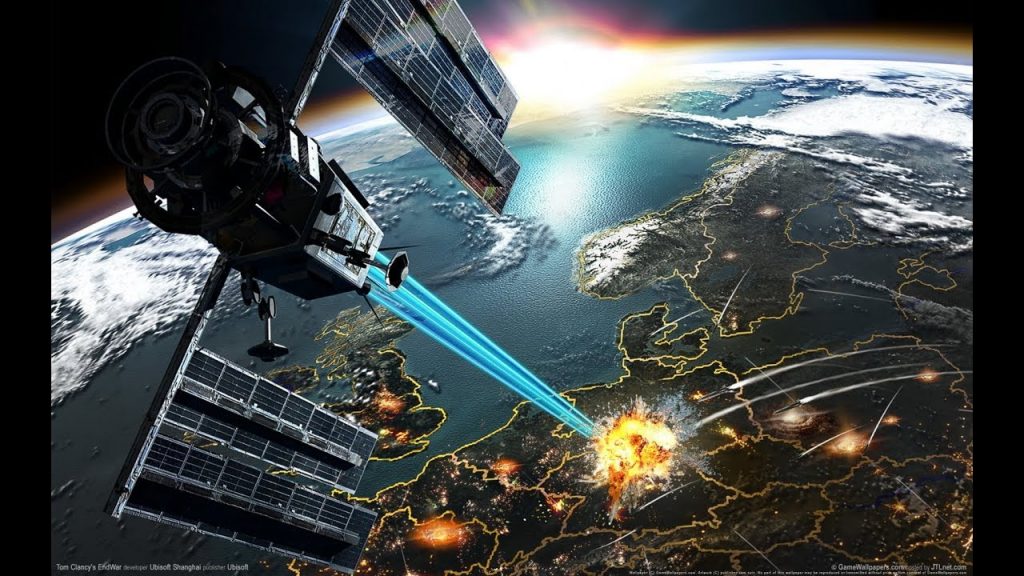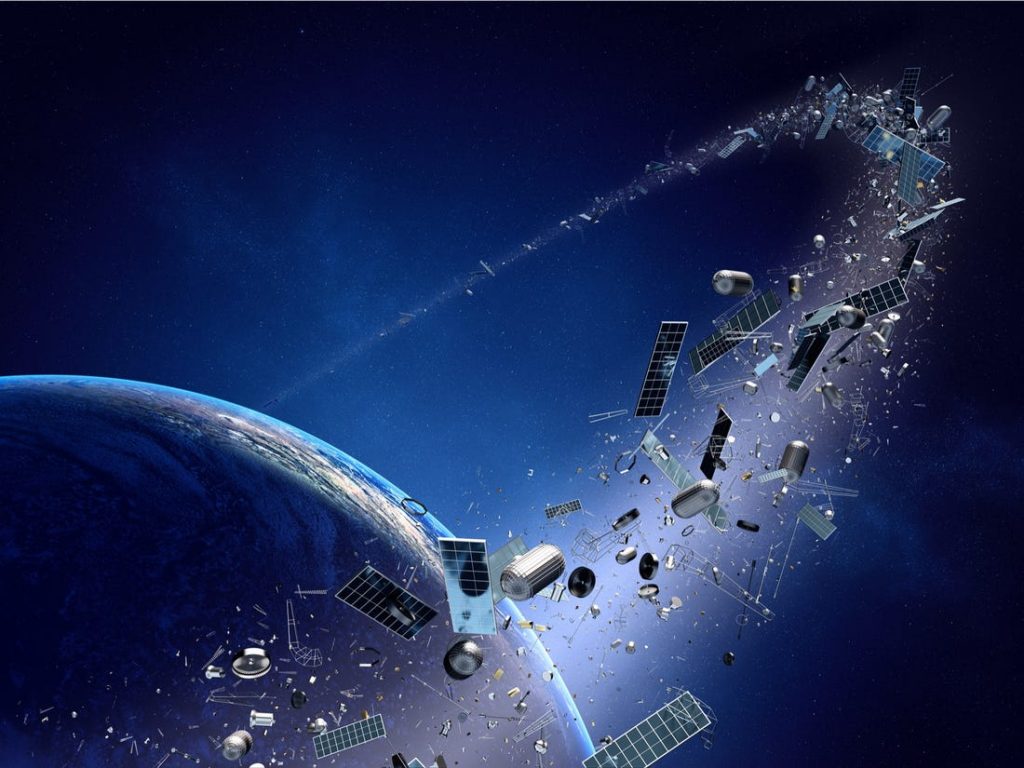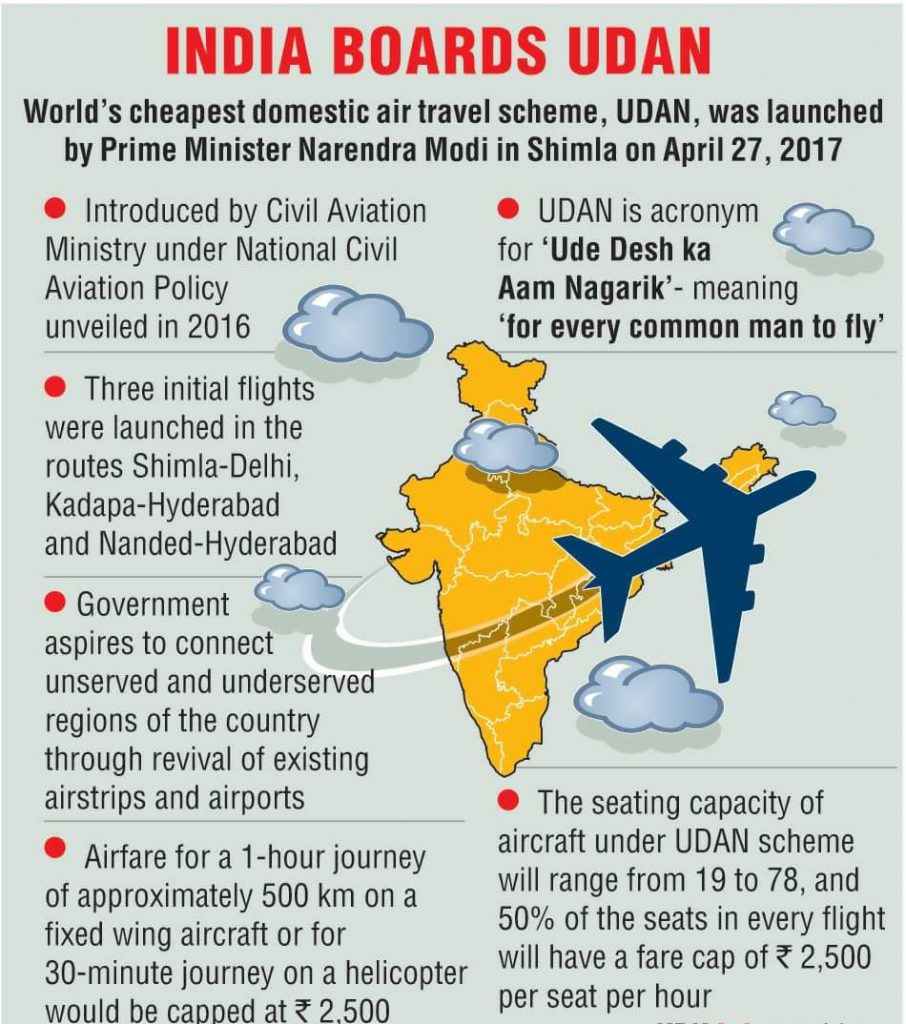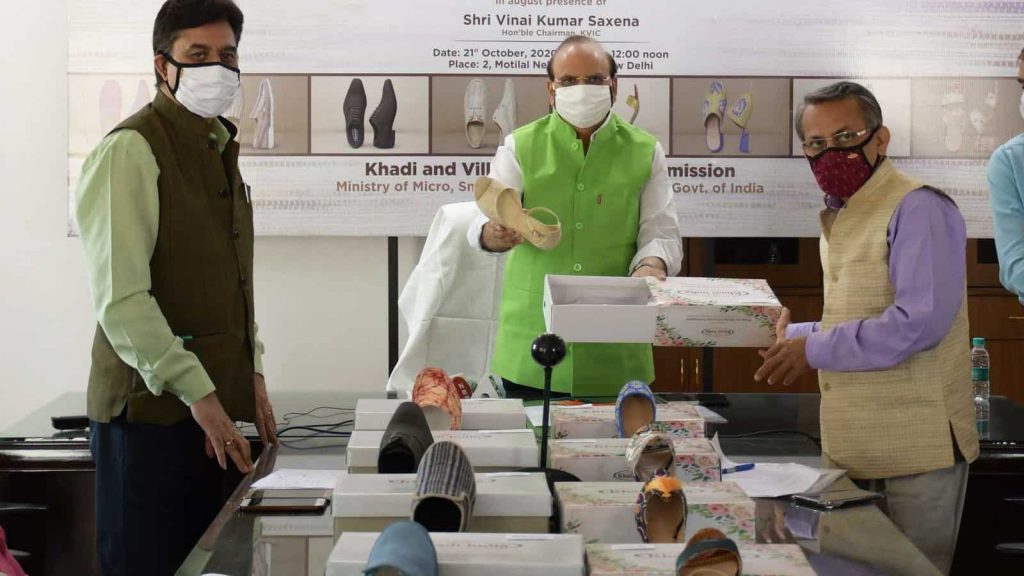Contents
- Cabinet approves Memorandum of Understanding between India and Nigeria on Cooperation in the Exploration and uses of outer space for peaceful purposes
- Cabinet approves extension of the Market Intervention Scheme for procurement of apples in Jammu and Kashmir for the year 2020-21
- Work Towards Making UDAN Scheme Sustainable: Pradeep Singh Kharola
- MOS Jal Shakti launched Mobile application for Geo tagging of the components of projects under Pradhan Mantri Krishi Sinchayee Yojana
- Shri Nitin Gadkari Launched Unique Khadi Footwear; KVIC Targets Rs 5000 Crore Business
- India progressing rapidly towards the goal of indigenously made Supercomputers
CABINET APPROVES MEMORANDUM OF UNDERSTANDING BETWEEN INDIA AND NIGERIA ON COOPERATION IN THE EXPLORATION AND USES OF OUTER SPACE FOR PEACEFUL PURPOSES
Focus: GS 3 ;Science and Technology- developments and their applications and effects in everyday life
Why in News?
- The Union Cabinet, chaired by the Prime Minister, Shri Narendra Modi was apprised of a Memorandum of Understanding (MoU) signed between India and Nigeria on Cooperation in the exploration and uses of outer space for peaceful purposes.
- The MoU has been signed between Indian Space Research Organisation (ISRO) of India at Bengaluru and by National Space Research and Development Agency (NASRDA) of Nigeria at Abuja.
About Outer Space Treaty of 1967;-
- Space has always fascinated humans. Outer space has been the arena of some of the most memorable technology demonstrations starting from Russia’s Sputnik and the U.S.’s Apollo 11. For India, Chandrayaan 1and 2 and Mangalyaan are symbols of national pride.
- India is a party to the Outer Space Treaty. The treaty prohibits countries from placing into orbit around the Earth “any objects carrying nuclear weapons or any other kinds of weapons of mass destruction”.
- It also prohibits the stationing of such weapons on celestial bodies, like the moon, or in outer space. The moon and other celestial bodies shall be used by all state parties to the treaty exclusively for peaceful purposes.
- It prohibits the placing of nuclear weapons in space, it limits the use of the Moon and all other celestial bodies to peaceful purposes only, and establishes that space shall be free for exploration and use by all nations, but no nation can claim sovereignty of outer space or any celestial body.

- The Outer Space Treaty does not ban military activities within space, military space forces, or the weaponization of space, with the exception of the placement of weapons of mass destruction in space.
- It is mostly a non-armament treaty and offers insufficient and ambiguous regulations to newer space activities such as lunar and asteroid mining.
About Outer Space;-
- Outer space is the expanse that exists beyond Earth and between celestial bodies.
- Outer space is not empty but contains a low density of particles (predominantly a plasma of hydrogen and helium) as well as electromagnetic radiation, magnetic fields, neutrinos, dust, and cosmic rays.
- The Karman line at an altitude of 100 km above sea level, is conventionally used as the start of outer space in space treaties and for aerospace records keeping.
- The framework for international space law was established by the Outer Space Treaty, which entered into force on 10 October 1967.
- Despite the drafting of UN resolutions for the peaceful uses of outer space, anti-satellite weapons have been tested in Earth orbit.

There are four more multilateral treaties that deal with specific concepts agreed to in the Outer Space Treaty:
- The Rescue Agreement of 1968
- The Space Liability Convention of 1972
- The Registration Convention of 1976
- The Moon Treaty of 1979
- The United Nations Committee on the Peaceful Uses of Outer Space (COPUOS) oversees these treaties and other questions of space jurisdiction.
- The international community has been debating for the need to introduce transparency and confidence-building measures in outer space activities (TCBMS).
- In this regard, European Union has also prepared a draft code of conduct (CoC). However, major powers are yet to agree on the idea of establishing a CoC conduct.
- Another important idea that has been put on the table jointly by Russia and China is the Prevention of the Placement of Weapons in Outer Space (PPWT) instead of only Weapon of Mass Destruction which is resisted by US and the EU.
What is the issue about Militarization of space?
The militarization of space involves the placement and development of weaponry and military technology in outer space. The early exploration of space in the mid-20th century had, in part, a military motivation, as the United States and the Soviet Union used it as an opportunity to demonstrate ballistic-missile technology and other technologies having the potential for military application.

What are some possible aspects of space use?
A Reconnaissance Satellite:-
It is an intelligence satellite for Earth observation or communications for military or intelligence applications.
Global Positioning Systems (GPS):-
Space militarization currently in use is GPS or Global Positioning System. This satellite navigation system is used for determining one’s precise location and providing a highly accurate time reference almost anywhere on Earth or in Earth orbit.
Military Communication Systems:-
The third current application of militarization of space can be demonstrated by the emerging military doctrine of network-centric warfare. Network-centric warfare relies heavily on the use of high-speed communications, which allows all soldiers and branches of the military to view the battlefield in real-time.
Space weapons are weapons used in Space Warfare;-
They include weapons that can attack space systems in orbit (i.e. anti-satellite weapons), attack targets on the earth from space or disable missiles travelling through space.
In the course of the militarization of space, such weapons were developed mainly by the contesting superpowers during the Cold War, and some remain Under Development Today.

Other measures to prevent militarization of Outer Space:-
UN Resolution: PAROS to TCBMs:-
PAROS:-
- The Prevention of an Arms Race in Outer Space (PAROS) is a UN resolution that advocates for a ban on the weaponization of space.
- It was conceived of during the Cold-war era.
- The PAROS resolution acknowledges the limitations of Outer Space Treaty in preventing an arms race in outer space.
- However, US opposition has thwarted treaty negotiations in the UN General Assembly.
TCBMs and PPWT:-
- Since 2005, the UNGA has adopted annual resolutions on “Transparency and Confidence-Building Measures in Outer Space Activities. (TCBM)”
- China and Russia in 2008 submitted the following treaties to reiterate the importance of a weapon-free outer space.
- Treaty on the Prevention of the Placement of Weapons in Outer Space (PPWT)
- Treaty on threat or use of force against Outer Space Objects.
The logjam over PAROS and PPWT treaties has necessitated building of counter-space capability test it will lead to lopsided balance of power. Thus even India has done the A-SAT test.
Growth Of Space Industry;-
- Technological changes have augmented the peaceful use of outer space.
- The price tag for reaching low Earth orbit has declined by a factor of 20 in a decade.
- This enhances human space travel possibilities by leveraging new commercial capabilities.
- The $350 billion space market in 2020 will touch $2.7 trillion by 2050.
Space industries are likely to follow a path like the software industry with more involvement of unleashed innovations and competition among firms.
For Example:-
- Starlink, the constellation being constructed by SpaceX to provide global Internet access, plans more than 10,000 mass-produced small satellites in low Earth orbit. It hopes to provide everyone, everywhere access to services such as distance education and telemedicine.
- Amazon’s Project Kuiper received U.S. Federal Communications Commission approvals for more than 3,000 micro-satellites.
- In a decade, 80,000 such satellites could be in space compared to less than 3,000 at present.
Challenges in Fulling the Space Potential;-
Outdated space laws:-
- Space laws were a product of a golden age of two decades — the 1960s and 1970s.
- As the outer space becomes democratized, commercialized and crowded, the multilateral framework for its governance is becoming outdated.
- Space laws do not have a dispute settlement mechanism.
- The laws are silent on collisions and Space debris and offer insufficient guidance on interference with others’ space assets.

These gaps heighten the potential for conflict in an era of congested orbits and breakneck technological change.
State-centric legislation:-
- The legal framework is state-centric, placing responsibility on states alone.
- However, non-state entities are now in the race of commercial space exploration and utilization.
- Some states are providing frameworks for resource recovery through private enterprises as it is not expressly forbidden for non-state actors.
Ex: According to NASA, the asteroid named 16 Psyche is so rich in heavy metals that it is worth $10,000 quadrillion. So, there starts a race for mineral exploration among both state and non-state actors.
The lack of alignment of domestic and international frameworks will start a damaging free-for-all competition for celestial resources.
Misuse of strategic position:-
- Space is the highest ground and so holds an extreme strategic value.
- Countries are investing in military space systems for communications, navigation to ensure operability of a range of capabilities.
- Reliance on militaries on satellite systems means that space assets become potential targets.
- The space arms race is difficult to curb since almost all space technologies have military applications.
Ex: Satellite constellations are commercial but governments can use their data to monitor military movements.
Need For Space Legislation;-
- Despite concerns about military activity in outer space for long, not much progress has been made in addressing them.
- The current geopolitics doesn’t seem to address the concerns of a space arms race.
- India has invested enormous resources in its space programme through the Indian Space Research Organisation.
- India has proposed involvement of private players and created an autonomous body IN-SPACe (Indian National Space Promotion and Authorisation Centre) under the Department of Space for permitting and regulating activities.
- The space environment that India faces requires to go beyond meeting technical milestones.
- We need space legislation with coherence across technical, legal, commercial, diplomatic and defence goals.
Way Forward;-
- As ambitious space missions are proliferating with advances in commercial space flight, there are concerns about possible ‘indiscriminate space mining’, ‘interplanetary contamination’ and ‘militarization of outer space’.
- As space opens up our space vision needs broadening too. It is a high time for the world to frame new laws that address global governance, regulatory and arms control issues.
Extra Info;-
Mission Shakti and ASAT Missile;-
- Mission Shakti was undertaken to develop highly-potent Anti-satellite weapons (ASAT).
- It is a joint programme of the Defence Research and Development Organisation (DRDO) and the Indian Space Research Organisation (ISRO).
- Anti-satellite (ASAT) System is missile-based system to attack moving satellites.

- ASAT propels India to the coveted space-superpower league.
- India will now have the power to decimate satellites for pure military and strategic purpose.
- India With this missile, India will have the capability to interfere with satellites or engage in direct attacks.
- ASAT missile can be air, sea or land-based.
Kessler Syndrome;-
The Kessler Syndrome is a theoretical scenario in which Earth’s orbit is overpopulated with objects and debris, preventing the use of satellites in certain sections of Earth’s orbit.

In this scenario, space pollution is perpetuated by collisions between orbiting objects, creating more debris and thus creating a domino effect of future collisions.
This theory was put forth in 1978 by NASA scientist Donald J. Kessler in a paper titled “Collision Frequency of Artificial Satellites: The Creation of a Debris Belt.”
CABINET APPROVES EXTENSION OF THE MARKET INTERVENTION SCHEME FOR PROCUREMENT OF APPLES IN JAMMU AND KASHMIR FOR THE YEAR 2020-21.
Focus: GS 3 ;Issues related to direct and indirect farm subsidies and minimum support prices; Public Distribution System- objectives, functioning, limitations, revamping; issues of buffer stocks and food security; Technology missions; economics of animal-rearing.
Why in News?
The Union Cabinet, chaired by Prime Minister Shri Narendra Modi, approved the extension of Market Intervention Scheme (MIS) for apple procurement in Jammu and Kashmir (J&K) for the current season also i.e. 2020-21 on the same terms and condition as was done in J&K during last season i.e. 2019-20.
The procurement of apple will be done by Central Procuring Agency i.e. National Agricultural Cooperative Marketing Federation ltd. (NAFED) through State Designated Agency i.e. Directorate of Planning and Marketing, Department of Horticulture & Jammu & Kashmir Horticulture Processing and Marketing Corporation (JKHPMC), directly from apple farmers of J&K and the payment will be made through Direct Benefit Transfer (DBT) into Bank account of apple farmers.
About Market Intervention Scheme (MIS);-
- MIS is a price support mechanism implemented on the request of State Governments for the procurement of perishable and horticultural commodities in the event of a fall in market prices.
- MIS works in a similar fashion to Minimum Support Price based procurement mechanism for food grains but is an ad-hoc mechanism.

- Its objective is to protect the growers of these horticultural/agricultural commodities from making distress sale in the event of the bumper crop.
- Market Intervention Scheme (MIS) is implemented by the Department of Agriculture & Cooperation, Ministry of Agriculture & Farmers’ Welfare.
- The objective of MIS is to provide remunerative prices to the farmers in case of excess of production and fall in prices.
- The MIS is an ad-hoc scheme under which include horticultural commodities and other agricultural commodities.
- These commodities are perishable in nature and which are not covered under the minimum price support (msp) scheme.
- Further, the MIS is implemented on the specific requests of the State Government/UT Administrations willing to share the loss with the Central Government on a 50:50 basis (75:25 in case of North-Eastern States).
Extra Info;-
National Agricultural Cooperative Marketing Federation of India Ltd (NAFED);-
- NAFED is registered under the Multi State Cooperative Societies Act, 2002.
- It was set up in 1958 with the objective to promote Cooperative marketing of Agricultural Produce to benefit the farmers.
- Agricultural farmers are the members of the General Body of NAFED, who participate in the decision making process of NAFED.
WORK TOWARDS MAKING UDAN SCHEME SUSTAINABLE: PRADEEP SINGH KHAROLA
Focus: GS 2 ;Welfare schemes for vulnerable sections of the population by the Centre and States and the performance of these schemes; mechanisms, laws, institutions and Bodies constituted for the protection and betterment of these vulnerable sections.
Why in News?
- Shri Pradeep Singh Kharola, Secretary, MoCA has stated that the stakeholders should work towards making the UDAN scheme sustainable on its own and improve its efficiency.
- During a video conference to commemorate the UDAN day today, he said that UDAN scheme has established the importance of travelling by air for common man specially to far flung areas. Shri Kharola congratulated the stakeholders and UDAN team for making the scheme successful with untiring efforts.
- He urged the airlines to undertake marketing initiatives so that more and more people can take benefit of the UDAN scheme. Senior officials from AAI, DGCA, MoCA and airlines also joined the video conference.
About Ude Desh Ka Aam Naagrik (UDAN);-
Ude Desh Ka Aam Naagrik (UDAN) was launched as a regional connectivity scheme under the Ministry of Civil Aviation (MoCA) in 2016.
It is an innovative scheme to develop the regional aviation market.

- The objective of scheme is to create affordable yet economically viable and profitable flights on regional routes so that flying becomes affordable to the common man even in small towns.
- The scheme envisages providing connectivity to un-served and underserved airports of the country through the revival of existing air-strips and airports. The scheme is operational for a period of 10 years.

Under-served airports are those which do not have more than one flight a day, while unserved airports are those where there are no operations.
UDAN 1.0;-
Under this phase, 5 airlines companies were awarded 128 flight routes to 70 airports (including 36 newly made operational airports)
UDAN 2.0;-
- In 2018, the Ministry of Civil Aviation announced 73 underserved and unserved airports.
- For the first time, helipads were also connected under phase 2 of UDAN scheme.
UDAN 3.0;-
Key Features of UDAN 3 included:-
- Inclusion of Tourism Routes under UDAN 3 in coordination with the Ministry of Tourism.
- Inclusion of Seaplanes for connecting Water Aerodromes.
- Bringing in a number of routes in the North-East Region under the ambit of UDAN.
UDAN 4.0:-
The 4th round of UDAN was launched in December 2019 with a special focus on North-Eastern Regions, Hilly States, and Islands.
The airports that had already been developed by Airports Authority of India (AAI) are given higher priority for the award of VGF (Viability Gap Funding) under the Scheme.
Under UDAN 4, the operation of helicopter and seaplanes is also been incorporated.
Achievements of UDAN :
- Three rounds of UDAN have already been undertaken and so far close to 50 lakh passengers have travelled in UDAN flights covering airports in 19 States and 2 UTs.
- The Scheme has been able to fulfil the vision of Hon’ble Prime Minister and keep up the motto of “Sab Uden, Sab Juden”
- Civil Aviation Ministry has operationalized 274 UDAN routes that have connected 45 airports and three heliports.
MOS JAL SHAKTI LAUNCHED MOBILE APPLICATION FOR GEO TAGGING OF THE COMPONENTS OF PROJECTS UNDER PRADHAN MANTRI KRISHI SINCHAYEE YOJANA
Focus: GS 2 ;Welfare schemes for vulnerable sections of the population by the Centre and States and the performance of these schemes; mechanisms, laws, institutions and Bodies constituted for the protection and betterment of these vulnerable sections.
Why in News?
Union Minister of State for Jal Shakti and Social Justice & Empowerment Sh. Rattan Lal Kataria, launched a Mobile application for Geo tagging of the components of projects under Pradhan Mantri Krishi Sinchayee Yojana- Accelerated Irrigation Benefits Programme(PMKSY-AIBP) of the Department of WR, RD& GR under Ministry of Jal Shakti.
About Pradhan Mantri Krishi Sinchayee Yojana (PMKSY):-
PMKSY is a Centrally Sponsored Scheme (Core Scheme) launched in 2015 with implementation share of Centre- States in 75:25 per cent and in the case of the north-eastern region and hilly states it will be 90:10.

This scheme has an outlay of Rs.50,000 crores for a period of 5 years (2015-16 to 2019-20) and it has been formulated by amalgamating 4 different schemes namely Accelerated Irrigation Benefit Programme (AIBP) of Ministry of Water Resources, River Development & Ganga Rejuvenation; Integrated Watershed Management Programme (IWMP) of Department of Land Resources; and On-Farm Water Management (OFWM) component of National Mission on Sustainable Agriculture (NMSA) of Department
of Agriculture and Cooperation.
PMKSY is to be implemented in an area development approach, adopting decentralized state-level planning and execution.
About Per Drop More Crop-;-
The Per Drop More Crop of Pradhan Mantri Krishi Sinchayee Yojana focuses on water use efficiency through the sprinkler and drip irrigation. It also aims at reducing fertilizer use, labour expenses and input costs.

What is Micro Irrigation?
- Micro-irrigation is a low-pressure, low-flow-rate type of irrigation that can reduce the likelihood of overwatering a landscape. This form of irrigation delivers water directly to where it is needed most-the root zone of plants and also delivers the water slowly and over a longer period of time, preventing runoff and reducing evaporation.
- The main elements generally used in Micro Irrigation are water source, pumping devices, ball valves, fertigation equipment, filters, control valves, accessories for connecting PVC and emitters.
Extra Info;-
About Jal Shakti Ministry;-
- It was formed at the Union in May 2019, by merging the Ministry of Water Resources and the Ministry of Drinking Water and Sanitation.
- It was to deal with all water, sanitation and irrigation-related issues, with this, the erstwhile water resources ministry has been brought under Jal Shakti ministry as a department.
SHRI NITIN GADKARI LAUNCHED UNIQUE KHADI FOOTWEAR; KVIC TARGETS RS 5000 CRORE BUSINESS
Focus: GS 2 ;Welfare schemes for vulnerable sections of the population by the Centre and States and the performance of these schemes; mechanisms, laws, institutions and Bodies constituted for the protection and betterment of these vulnerable sections.
Why in News?
Now feel the fineness of handcrafted Khadi fabric in the footwear. Union Minister for MSME, Shri Nitin Gadkari today launched India’s first-ever high quality Khadi Fabric Footwear, designed by Khadi and Village Industries Commission (KVIC) through Video Conference. These footwear are made of Khadi fabric like Silk, Cotton and Wool. Shri Gadkari also launched the online sale of Khadi footwear through KVIC’s e-portal www.khadiindia.gov.in.
Incidentally, the idea behind developing the Khadi fabric footwear also coincides with the Prime Minister’s vision of “Local to Global”. Earlier, KVIC had successfully launched its first-ever Khadi wrist watch in association with Titan which has been a trend-setter.


About Khadi & Village Industries Commission (KVIC):-
The Khadi and Village Industries Commission (KVIC) is a statutory body established by an Act of Parliament (Khadi and Village Industries Commission Act of 1956). In April 1957, it took over the work of former All India Khadi and Village Industries Board.
Functions:-
It is an apex organization under the Ministry of Micro, Small and Medium Enterprises (MSME), with regard to khadi and village industries within India, which seeks to – “plan, promote, facilitate, organize and assist in the establishment and development of khadi and village industries in the rural areas in coordination with other agencies engaged in rural development wherever necessary.”
The Commission has three main objectives which guide its functioning. These are:-
- The Social Objective – Providing employment in rural areas.
- The Economic Objective – Providing salable articles.
- The Wider Objective – Creating self-reliance amongst people and building up a strong rural community spirit.
INDIA PROGRESSING RAPIDLY TOWARDS THE GOAL OF INDIGENOUSLY MADE SUPERCOMPUTERS
Focus: GS 3 ;Science and Technology- developments and their applications and effects in everyday life
Why in News?
India is fast expanding its supercomputer facilities and developing the capacity to manufacture its own supercomputers in the country.
The National Super Computing Mission (NSM) is rapidly boosting high power computing in the country through its various phases to meet the increasing computational demands of academia, researchers, MSMEs, and startups in areas like oil exploration, flood prediction as also genomics, and drug discovery.

About the National Supercomputing Mission (NSM):-
To provide the country with supercomputing infrastructure to meet the increased computational demands of academia, researchers, MSMEs, and startups by creating the capability design, manufacturing, of supercomputers indigenously in India.

Boosting computational capacity;-
It is first of its kind attempt to boost the country’s computing power, the National Super Computing Mission is initiated jointly by the Ministry of Electronics and IT (MeitY) and Department of Science and Technology (DST) and implemented by the Centre for Development of Advanced Computing (C-DAC), Pune and the Indian Institute of Science (IISc), Bengaluru.
Establishing robust network-;-
- The target of the mission was set to establish a network of supercomputers ranging from a few Tera Flops (TF) to Hundreds of Tera Flops (TF) and three systems with greater than or equal to 3 Peta Flops (PF) in academic and research institutions of National importance across the country by 2022.
- Under the mission, the first supercomputer assembled indigenously called Param Shivay which was installed in IIT (BHU). Similar systems Param Shakti and Param Brahma were installed at IIT-Kharagpur and IISER, Pune.
- 11 new systems are likely to be set up in different IITs, NITs, National Labs, and IISERs across India by the end of 2020.





